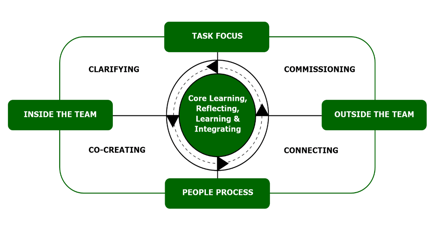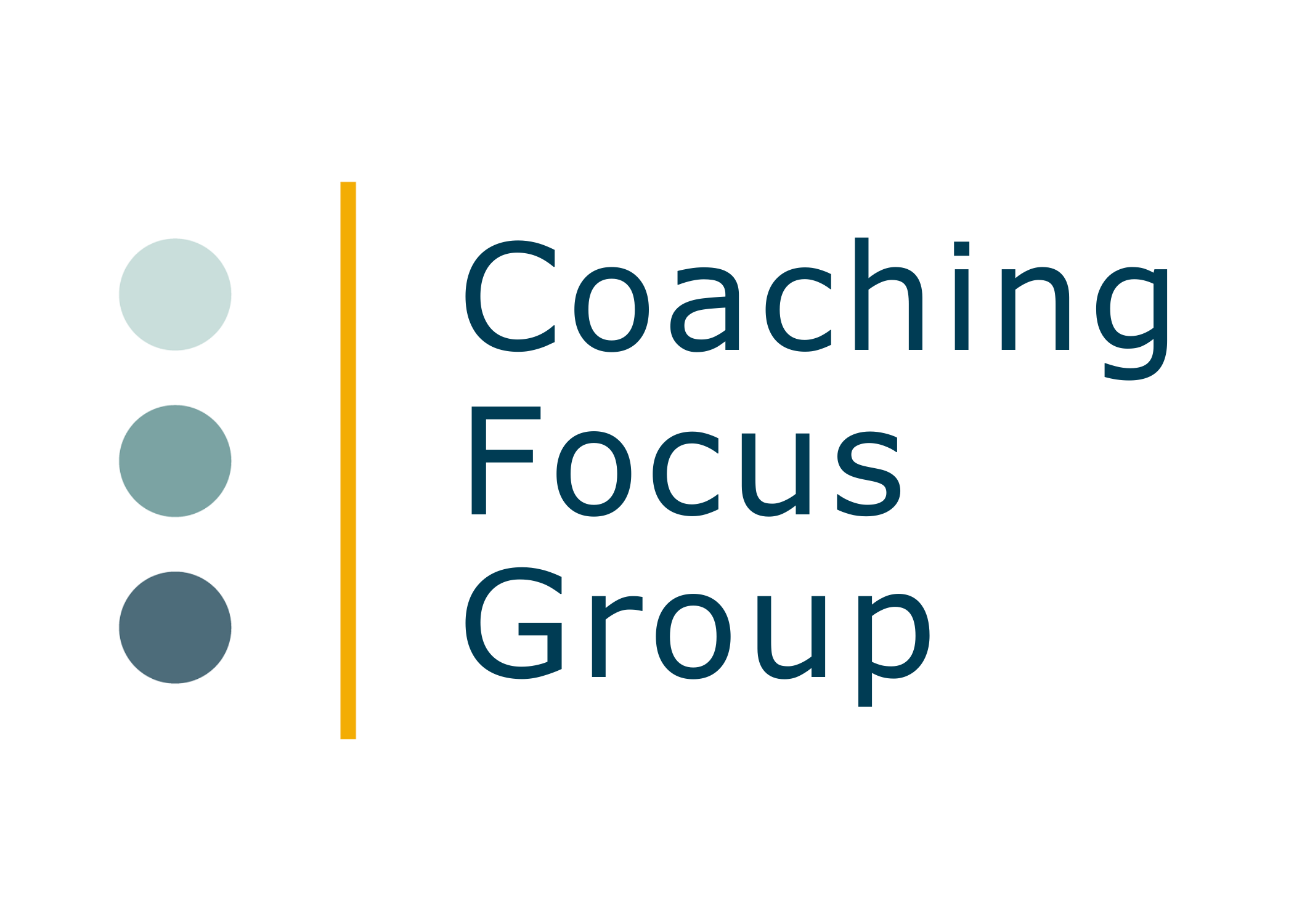By Trayton Vance | Apr 28, 2022
Team Coaching
Team coaching is often regarded as team facilitation or team building, but in fact team coaching is a more complex intervention. Team building is about helping the team build relationships in the team to a level they would not have reached within the same timeframe without team building but has no particular focus on team performance but rather focussed on short term behavioural change.
Team facilitation is about helping the team reach a specific goal or result they would not have reached within the same timeframe without facilitation – it’s about problem solving but has no particular focus on longer term team relationships or group dynamics.
Team coaching sits above both these interventions. The team coach helps the team to achieve a level of performance and team dynamics they would not have reached without team coaching. It is about building capacity and synergistic team relationships that allow for higher performance. This requires a range of skills that includes both team building and team facilitation skills, whilst the skills of team coaching will additionally cover:
- Managing different individuals’ needs, fears and expectations
- Managing conflict especially sub-groups, and holding conflict constructively
- Understanding and holding the group dynamics as the team moves through different stages of development
- Managing the team development process and boundaries within the wider organisational context
This additional level of skill required by the team coach means that professional business coaches experienced in 1:1 coaching will usually not have the competence to effectively coach team without additional training and experience. Business coaching qualifications are generally concerned with 1:1 coaching and do not provide the level of competence required for effective team coaching. For instance, the core coaching skills of listening, using silence, challenge and conflict management are far simpler when there is just one coachee. When there is a team of individuals, the process becomes far more complex and requires high levels of coach awareness, transparency and even courage.
At its core, generic coaching is all about helping the client articulate and understand their own identity and power. Achieving this level of raised awareness is far easier to articulate and work with 1:1 than it is with a team of individuals, each with their own personal identity, as well as contributing to the identity of the team.
To team coach effectively, the coach needs additional training on a business coaching program that is geared to team coaching and to achieve a business coaching qualification in team coaching.
Team coaching process
There are several team coaching approaches and processes that a team coach can use. Team coaches will have a preferred approach based on their training, experience and level of competence. Tuckman’s model is popular, as is Scott Peck’s model, the latter being preferred by team coaches who are experienced in group dynamics. Lencioni’s Five Dysfunctions of a Team is commonly used as a basis for team coaching. Lencioni’s pyramidical framework of trust/conflict/commitment/accountability/results provides a solid foundation for a team coaching process that allows for clear facilitation as well as exploration of group dynamics.
Another elegant and highly practical team coaching framework is outlined the team coaching model by Peter Hawkins.
The model has two dimensions:
- Inside The Team / Outside The Team
- Task Focus (outcomes) / People Process
These elements combine to produce a four-quadrant model:

Inside/Outside the team:
This first dimension raises a question useful to address when working with teams - who is inside the team and who is closely connected to it but outside the team? Those inside the team are a small number of people with complementary skills committed to a common purpose, a set of performance goals and approach for which they hold themselves mutually accountable. Those outside the team are classed as stakeholders - they have an investment in the team’s performance and outcomes but are not involved in the delivery of the outcomes.
Task Focus/People Process:
This second dimension has two elements:
- Task Focus, addressing the purpose, vision strategy, delivery of objectives, systems and roles etc. These are the more quantitative cognitive issues
- People Process is about interpersonal relationships, team dynamics, leadership style, culture, values etc. These are the more qualitative and emotional aspects
When these two dimensions are combined, four boxes or disciplines of a team are created, which are:
- Commissioning – Stakeholder Expectations
- Clarifying – Team Tasks
- Co-Creating – Team Relationships
- Connecting – Stakeholder Relationships
There is also a fifth ‘discipline’ in the centre and core to the team’s sustainable success – Learning and Reflecting. When a team is high functioning and performing well it will be succeeding in all five areas. The role of the team coach is to help the team to become aware of its performance in each of these areas, to understand the impact of each on team performance and to enhance team effectiveness with relevant interventions. The team coach’s role is to help the team identify and decide which area/s to attend to first in service of the team performance improvement. It might be necessary to spend more time working as a team on one of the areas than another.
Commissioning - Stakeholder Expectations
This focuses on stakeholders’ expectations. For a team to be successful in meeting business objectives, it needs clear direction on what is required from its stakeholders. This includes a clear purpose and defined success criteria by which performance will be assessed.
The role of the team coach is to help the team engage robustly with its primary and other stakeholders to help the team address the fundamental question: What do our stakeholders, now and in the future, demand from us? Addressing this question is essential if the team is to develop a clear view of its purpose in the wider system in which it operates.
Clarifying – Team Outcomes
The focus here is for the team to jointly clarify and agree how the team will meet expectations. To be effective, team members need to create a collective endeavour that is challenging for them to achieve, both compelling and rewarding for the team as a whole and for each individual member. This must be an endeavour that can only be achieved by all members working together and interdependently. The role of the team coach here is to help the team clearly articulate and agree the purpose (why), the vision (what), team values and behaviours (how), as well as strategy, objectives, systems, processes and clear team roles and responsibilities.
Co-creating – Team Relationships
Co-creating focuses on how to achieve more together as a team rather than as separate individuals. To deliver the joint endeavour, the team needs to work together and productively manage their collective capacities and limitations. The aim of the team must be to gain optimum value from the diverse capacities, skills and styles of all its members. The effective team also builds trust in each other, so it can harness diverse perspectives to make constructive, informed decisions. Co-creating also focuses on helping the team be as creative, innovative, and adaptive as possible to meet the demands of primary and other stakeholders.
The role of the team coach here is to work with the group dynamic to shift relationships to a more effective level for higher performance. This means addressing critical issues that are often hidden in the team relating to mutual trust, personal likes/dislikes, commitment, fear of failure, and powerplays. Many professional business coaches will take a process-driven approach to this, using standard team building or facilitation techniques or rely on the use of psychometric instruments such as Belbin role preferences, Strengths Deployment Inventory or Insights for Teams. These are all useful in themselves but do not address the psychodynamic interplay occurring in the team in real-time during the coaching. The skilled team coach will use real-time conflict and disagreement to highlight group dynamic issues in the team and bring what is hidden to the surface so it can be explored and dealt with.
Connecting – Stakeholder Relationships
The team must also connect outside of itself to engage stakeholders and develop the type of relationships that will drive improvements in the team’s performance. This involves being tuned in to the organisational culture as well as being aligned with the wider Political, Economic, Social, Technological, Legal and Environmental (PESTLE) context. Managing these relationships is the responsibility of the whole team and not just the team leader, though ultimately, they are accountable. The team should present a unified front to stakeholders and adapt the message to fit the requirements of different stakeholder groups.
Here, the role of the team coach is to ensure that the team is managing the various stakeholder relationships effectively. Often, one stakeholder will be minimised or forgotten which can result in difficulties later. The team must make sure that the voices of all stakeholders are heard, and difficult dynamics are surfaced and addressed.
Core Learning
At the centre of the model is Core Learning where the team stands back and reflects on its own learning, development and performance. The role of the team coach is to ensure that team learning is embedded into the team culture and becomes a permanent team behavioural norm. Teams can be caught up in the whirlwind of achieving targets and future objectives and may forget or neglect to reflect and review learning from past performance. The team coach has the role of building sustainability, learning and resilience through team self-reflection, review, and evaluation. When the team business coaching assignment is complete, the team should be functioning at a much higher level than before, fully utilising the talents of all team members, aware of its areas of continuous development and be able to continue to build its self-sufficiency after the coach’s work is complete.
